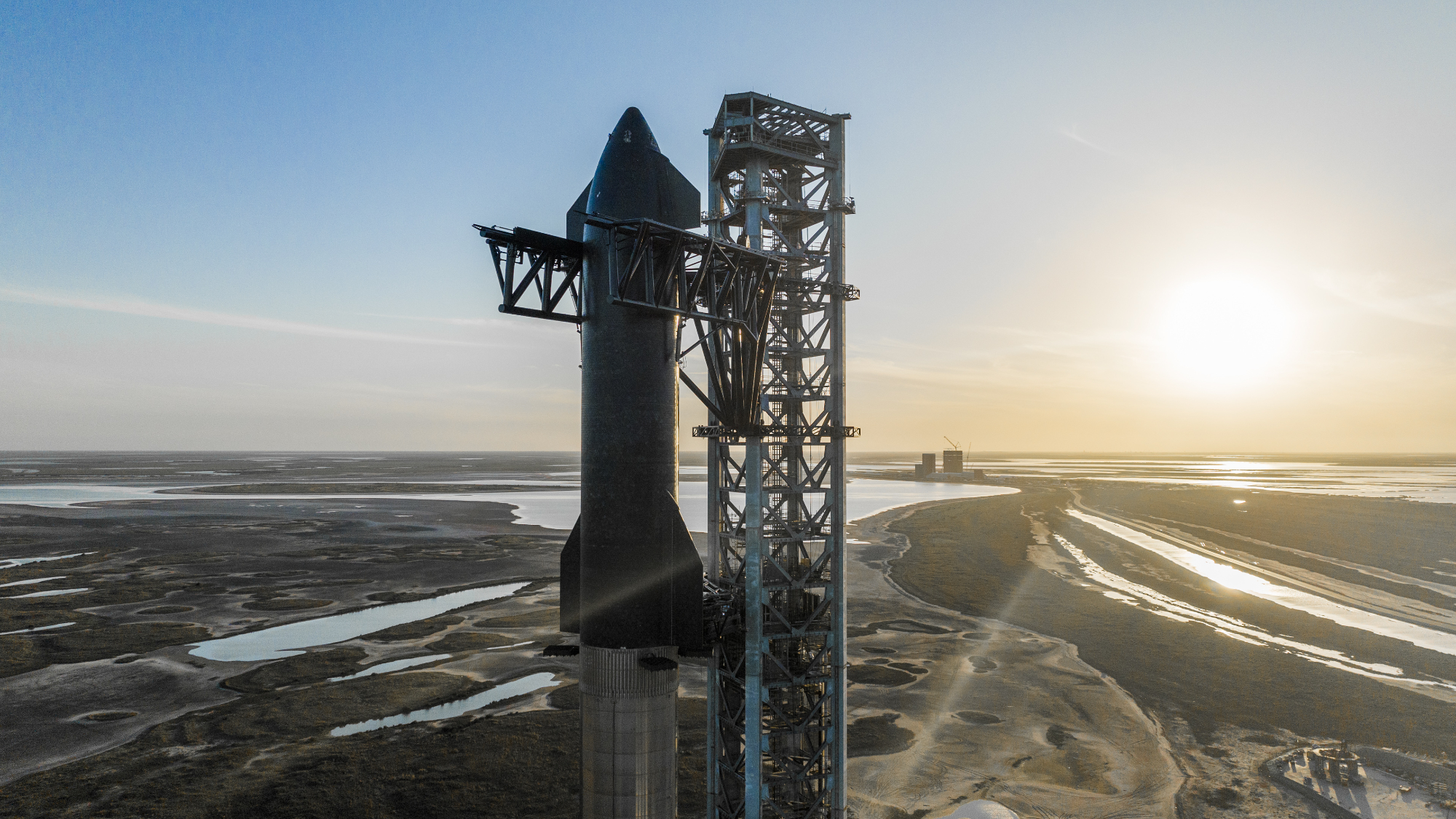
The U.S Federal Aviation Administration (FAA) has delayed completion of an environmental review of SpaceX's Starship program by at least another month, to April 29 at the earliest.
The FAA has been working on a programmatic environmental assessment (PEA) of Starbase, the South Texas site where SpaceX develops, builds and tests its next-generation Starship vehicle, for months now. The agency published a draft PEA in mid-September, estimating at the time that the final report would be done by the end of the year.
That didn't happen; the FAA pushed the completion date back to Feb. 14, citing the need to consult further with other agencies and analyze the thousands of public comments submitted in response to the draft PEA.
Photos: SpaceX lifts huge Super Heavy rocket onto launch stand
The target date slipped again, to March 28, for similar reasons. And the FAA announced today (March 25) that the same factors have pushed the target date to the right yet again, to April 29.
Today's news likely won't have much of an impact on Starship's development timeline, however. SpaceX is gearing up to launch the first-ever Starship orbital test flight, but the company likely won't be ready for that milestone until May at the earliest, Elon Musk said recently.
Starship is a giant, fully reusable rocket-spaceship duo that SpaceX is developing to take people and cargo to the moon, Mars and other distant destinations. Musk believes that the vehicle will make ambitious exploration feats such as Mars colonization economically feasible.
Get the Space.com Newsletter
Breaking space news, the latest updates on rocket launches, skywatching events and more!
Though Starship has yet to go orbital, it does have some flights under its belt. In May 2021, for example, a three-engine prototype known as SN15 ("Serial No. 15") aced a roughly 6.2-mile-high (10 kilometers) flight into the South Texas sky.
Starship will be powered by SpaceX's new Raptor engine. Each rocket-spaceship stack will require 39 Raptors — 33 for the first-stage booster, which is known as Super Heavy, and six for the upper-stage spacecraft, which is called Starship.
Building enough Raptors to support Starship and its envisioned high flight frequency may prove to be one of the program's biggest challenges. Indeed, an engine bottleneck is one reason that SpaceX isn't yet ready to launch the debut orbital mission.
"We'll have 39 flightworthy engines built by next month, then another month to integrate, so hopefully May for orbital flight test," Musk tweeted on Monday (March 21).
Mike Wall is the author of "Out There" (Grand Central Publishing, 2018; illustrated by Karl Tate), a book about the search for alien life. Follow him on Twitter @michaeldwall. Follow us on Twitter @Spacedotcom or on Facebook.
Join our Space Forums to keep talking space on the latest missions, night sky and more! And if you have a news tip, correction or comment, let us know at: community@space.com.

Michael Wall is a Senior Space Writer with Space.com and joined the team in 2010. He primarily covers exoplanets, spaceflight and military space, but has been known to dabble in the space art beat. His book about the search for alien life, "Out There," was published on Nov. 13, 2018. Before becoming a science writer, Michael worked as a herpetologist and wildlife biologist. He has a Ph.D. in evolutionary biology from the University of Sydney, Australia, a bachelor's degree from the University of Arizona, and a graduate certificate in science writing from the University of California, Santa Cruz. To find out what his latest project is, you can follow Michael on Twitter.









